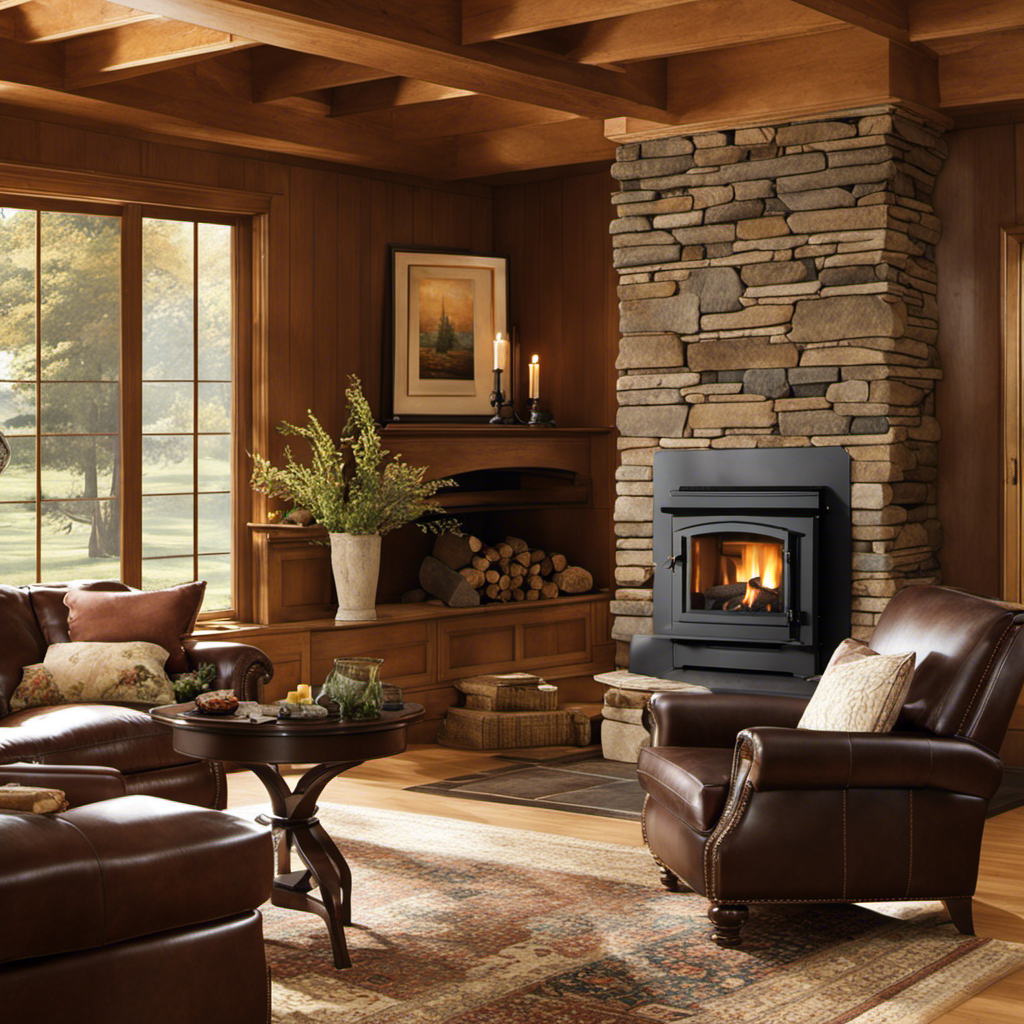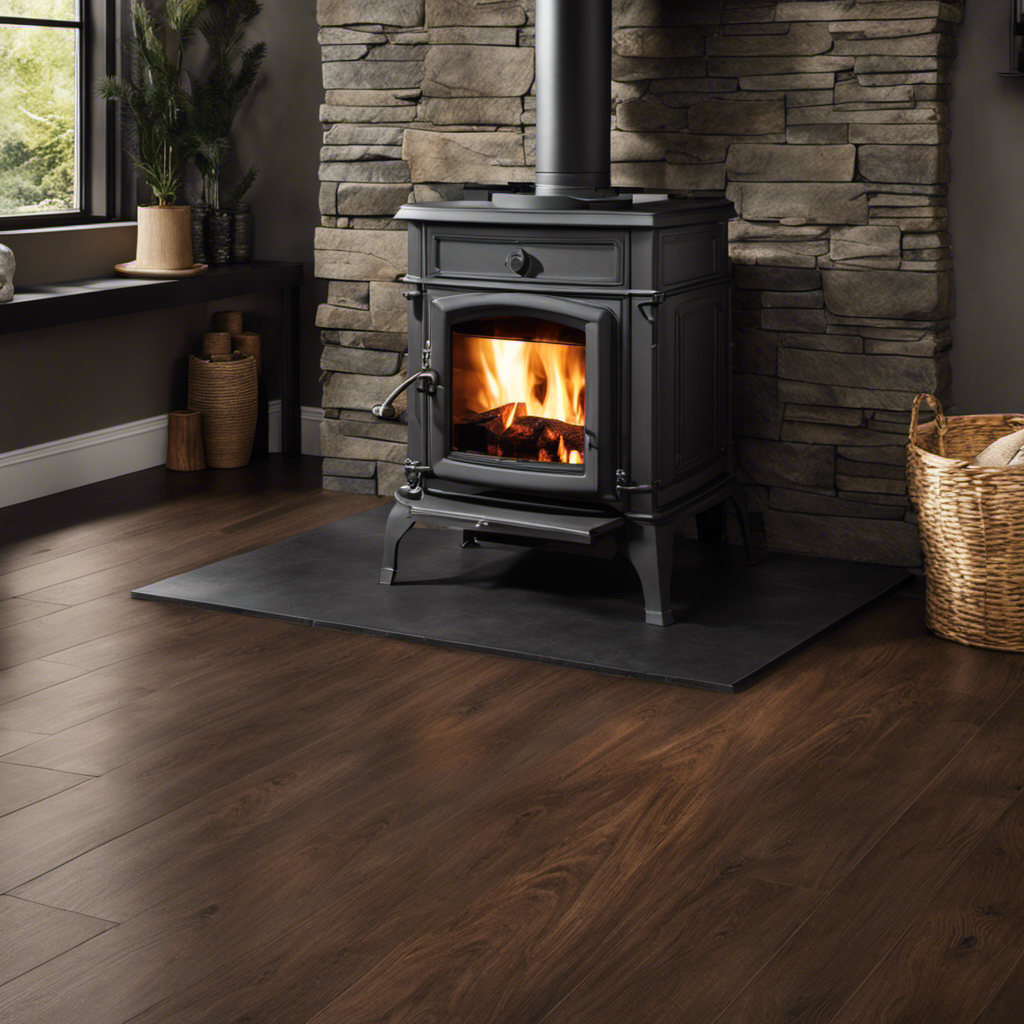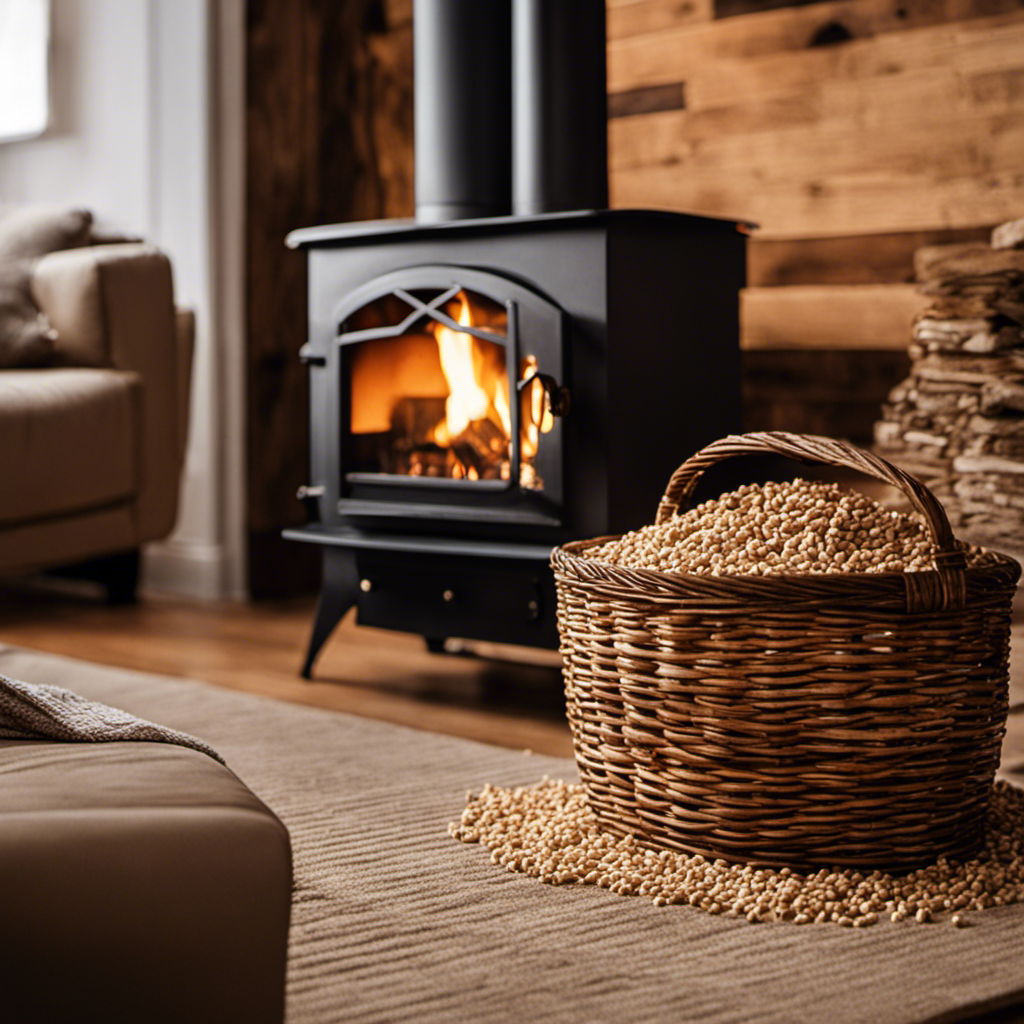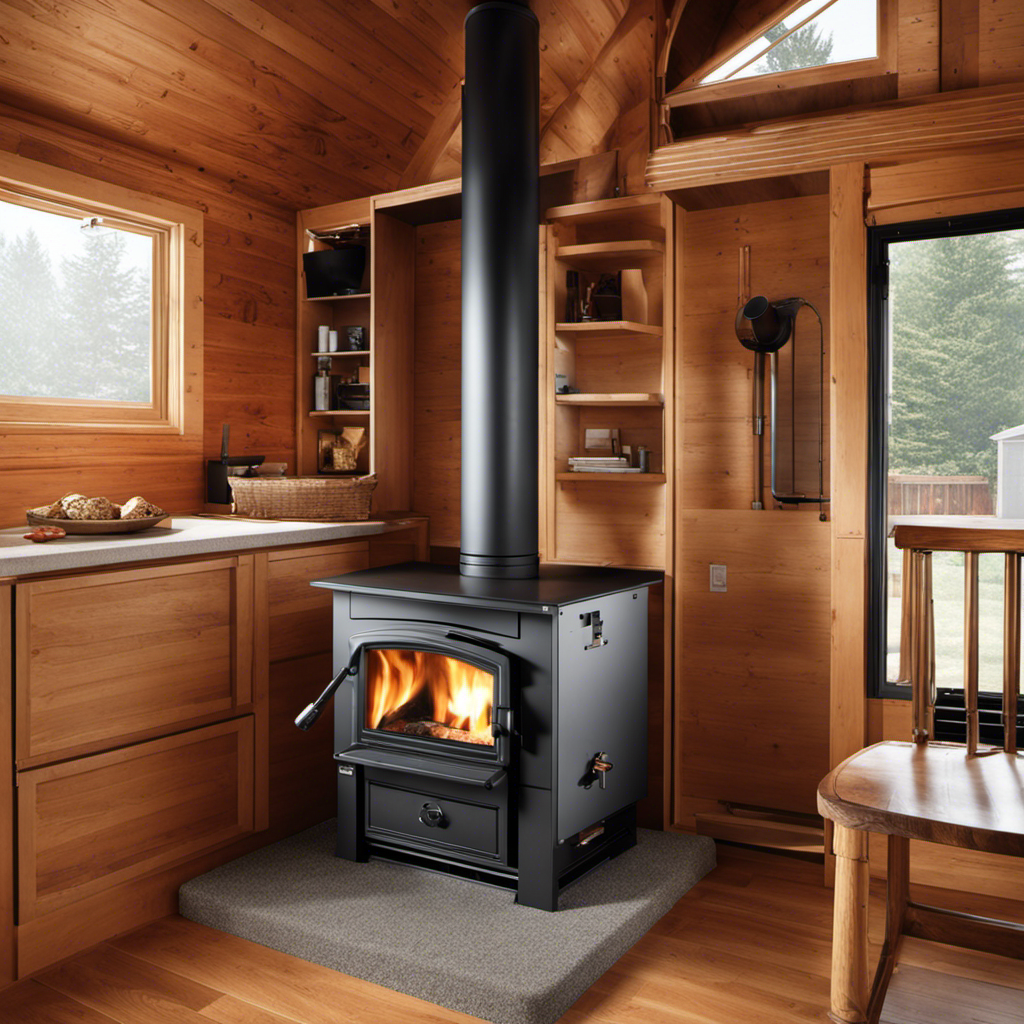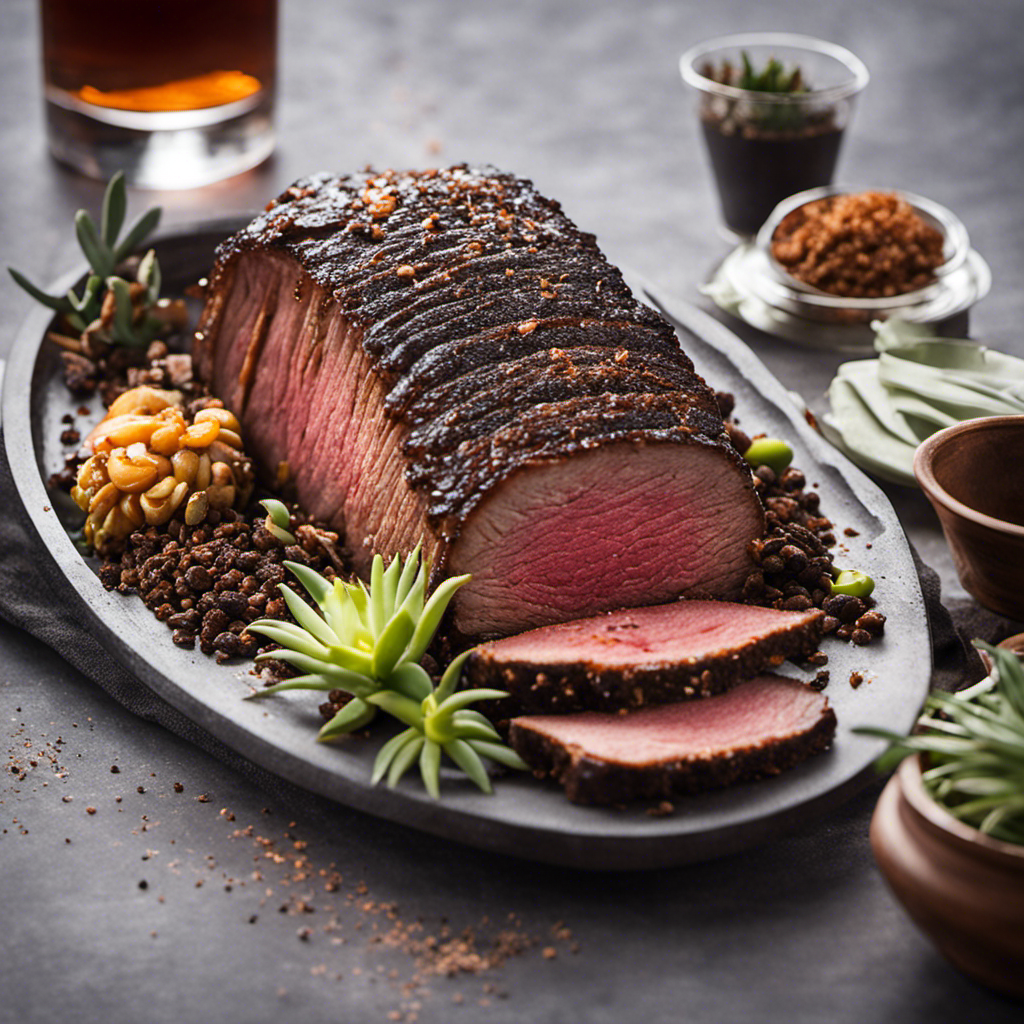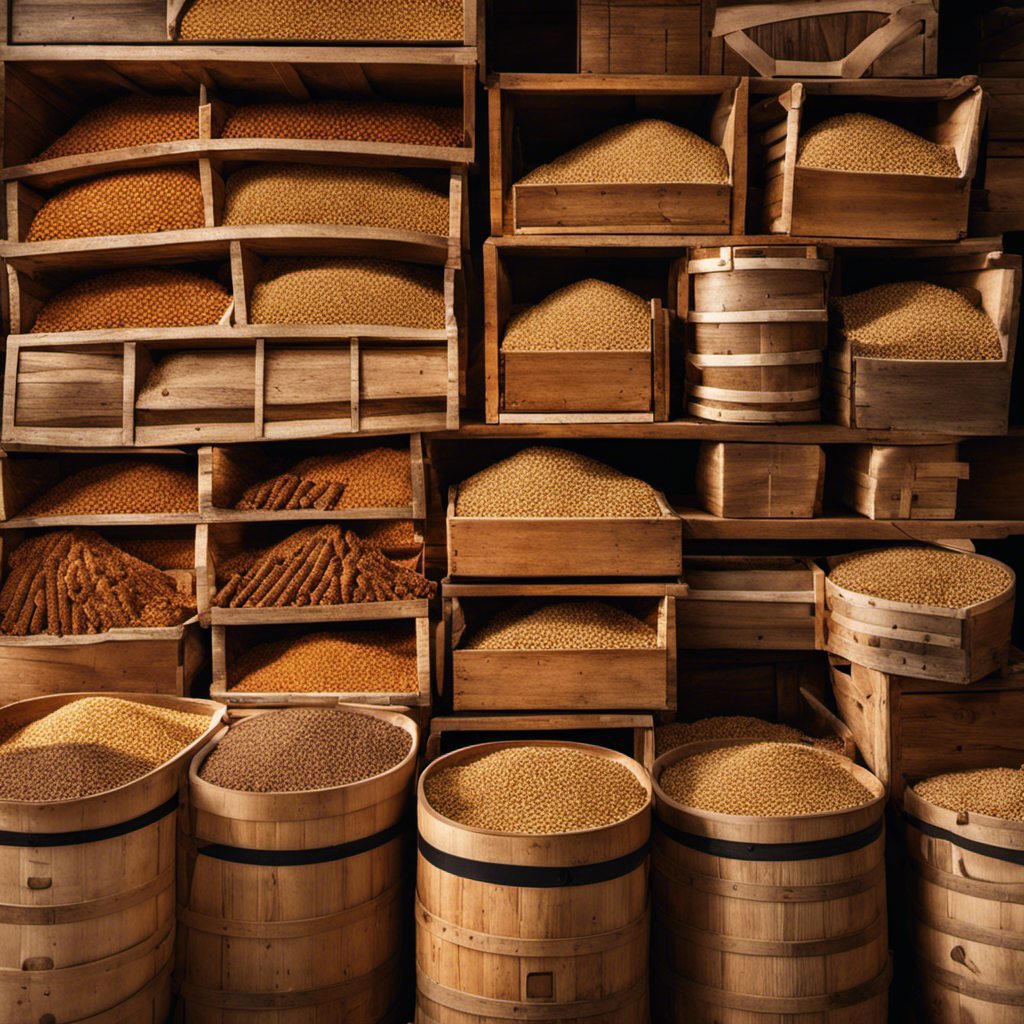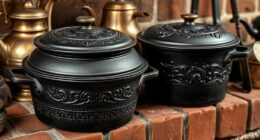The cozy warmth and soothing sound of a wood-burning fireplace has always had a special spot in my heart. Lately, I’ve been thinking about switching it out for a pellet stove.
Imagine the convenience of a clean-burning, efficient heating system that still provides that cozy ambiance.
In this article, I’ll guide you through the process of converting your wood fireplace to a pellet stove. From assessing your current setup to choosing the right stove and completing the installation, we’ll cover all the steps to make this conversion a success.
Key Takeaways
- Assess the condition of the wood fireplace and chimney before considering conversion to a pellet stove.
- Research and choose the right pellet stove based on size, efficiency ratings, cost of pellets, and desired features.
- Prepare the fireplace for conversion by cleaning the chimney, making necessary modifications to the hearth, and checking for a damper.
- Install the pellet stove properly by following manufacturer’s guidelines, considering venting requirements and electrical connections, and regularly cleaning and maintaining the stove for optimal performance.
Assessing the Wood Fireplace
Before you can convert your wood fireplace to a pellet stove, you need to assess its condition and suitability for installation. Evaluating your options and conducting a cost analysis will ensure that you make an informed decision.
Firstly, check the condition of your wood fireplace. Look for any cracks, leaks, or damage that may affect the installation process.
Next, consider the size and layout of your fireplace. Measure the dimensions and determine if it can accommodate a pellet stove.
Additionally, assess the chimney and venting system to ensure it is compatible with a pellet stove.
Finally, evaluate the cost of conversion. Consider the price of the pellet stove, installation fees, and any necessary modifications.
By thoroughly assessing your wood fireplace, you can determine if converting to a pellet stove is a viable option.
Once you have evaluated your fireplace, it’s time to move on to choosing the right pellet stove for your needs.
Choosing the Right Pellet Stove
When selecting the appropriate pellet stove, it’s crucial to consider factors such as size, efficiency, and features. Pellet stove efficiency plays a significant role in determining the cost of operating the stove and its overall environmental impact. Look for stoves with high efficiency ratings, as they will burn pellets more efficiently, producing more heat with less waste.
In terms of cost comparison, consider the initial purchase price of the stove, but also factor in the cost of pellets and maintenance over time. Some pellet stoves offer additional features like programmable thermostats, remote controls, and self-cleaning mechanisms, which can enhance convenience and ease of use.
With these factors in mind, you can make an informed decision on the pellet stove that best suits your needs.
Now, let’s move on to preparing the fireplace for conversion.
Preparing the Fireplace for Conversion
To get started, you’ll want to ensure that your fireplace is clean and free of any debris. Begin by thoroughly cleaning the chimney, as any buildup can lead to poor ventilation and potential fire hazards. Hire a professional chimney cleaner if needed.
Next, consider any necessary modifications to the hearth to accommodate the pellet stove. This may include installing a non-combustible hearth pad or extending the hearth to meet safety requirements. It’s important to consult the manufacturer’s guidelines for specific dimensions and clearances.
Additionally, check if your fireplace has a damper, as it may need to be removed or sealed to prevent drafts.
With the fireplace properly prepared, you’re now ready to move on to installing the pellet stove, which we’ll discuss in the next section.
Installing the Pellet Stove
First, make sure you have all the necessary tools and materials for the installation. Installing the pellet stove requires careful consideration of venting requirements. You must ensure proper ventilation to prevent the build-up of harmful gases.
Additionally, check the electrical connections to ensure they meet the stove’s power requirements. Once the stove is in place, you can explore different pellet storage options, such as using a hopper or a nearby storage bin.
It’s important to regularly clean and maintain the pellet stove to ensure optimal performance. This includes cleaning the burn pot, ash pan, and chimney. Troubleshooting common issues, such as a lack of heat or ignition problems, may require checking the fuel supply, air intake, or exhaust system.
Now, let’s move on to connecting the pellet stove to the chimney without further delay.
Connecting the Pellet Stove to the Chimney
Once the stove is in place, you can ensure proper ventilation by connecting it to the chimney.
Connecting the pellet stove to the flue is a crucial step in the installation process.
There are various venting options for pellet stoves, including direct venting and power venting.
Direct venting involves running a pipe through the wall or ceiling to the outside, while power venting uses a fan to push the exhaust gases out.
To determine the best option for your setup, consider factors like the layout of your home and the distance between the stove and the chimney.
Consult the manufacturer’s instructions and local building codes for specific guidelines.
With the pellet stove properly connected to the chimney, you can now move on to maintaining and operating the pellet stove efficiently and safely.
Maintaining and Operating the Pellet Stove
Now that the pellet stove is properly connected to the chimney, it is important to understand the cleaning requirements and how to troubleshoot common issues.
Regular cleaning is crucial to maintain the efficiency and performance of the pellet stove. The ash pan and burn pot should be cleaned regularly to prevent the accumulation of ash and debris. Additionally, the exhaust vent and air intake should be inspected and cleaned to ensure proper airflow. Failure to clean these components can lead to decreased efficiency and potential safety hazards.
Common issues that may arise include pellet jams, ignition problems, and inconsistent heat output. Troubleshooting these problems often involves checking for blockages in the hopper or auger, inspecting the igniter or flame sensor, and adjusting the feed rate or air settings. It is important to consult the manufacturer’s manual for specific troubleshooting steps and to contact a professional if needed.
Proper maintenance and troubleshooting can help ensure the longevity and optimal performance of your pellet stove.
Can I use a Wood Pellet Stove in place of a Wood Fireplace?
Yes, you can use a wood pellet stove in place of a wood fireplace. Just follow the lighting wood pellet stove instructions to ensure proper use. Wood pellet stoves are efficient and environmentally friendly, making them a great alternative to traditional wood fireplaces.
Can I Use a Wood Pellet Stove in Place of a Traditional Wood Fireplace?
Yes, you can use a wood pellet stove in place of a traditional wood fireplace. Lighting wood pellet stove is a convenient, efficient, and environmentally-friendly alternative to burning wood in a fireplace. It provides a consistent heat source and produces less smoke and ash. It’s a great option for those looking to switch to a more sustainable heating option.
Frequently Asked Questions
How Much Does It Cost to Convert a Wood Fireplace to a Pellet Stove?
Converting a wood fireplace to a pellet stove can be cost-effective in the long run. The initial investment may vary depending on factors like the size of the fireplace and the quality of the pellet stove. Additionally, pellet stoves have a lower environmental impact compared to wood fireplaces.
Are There Any Government Incentives or Rebates Available for Converting to a Pellet Stove?
There are government incentives and rebates available for converting to a pellet stove. These programs provide financial assistance and cost savings to help offset the expenses of the conversion process.
Can I Still Use My Wood Fireplace Occasionally After Converting It to a Pellet Stove?
Yes, you can still use your wood fireplace occasionally after converting it to a pellet stove. However, using a pellet stove instead of a wood fireplace reduces environmental impact and can save you money in the long run.
How Long Does It Typically Take to Complete the Conversion Process?
It typically takes about a day or two to complete the conversion process. The cost of pellet stoves varies depending on the model and features. Some advantages of pellet stoves include higher efficiency and cleaner burning.
What Kind of Maintenance Is Required for a Pellet Stove Compared to a Wood Fireplace?
Maintaining a pellet stove is generally easier than a wood fireplace. Pellet stoves require regular cleaning of the ash pan and venting system, as well as annual professional inspections and occasional replacement of parts.
Conclusion
Well, after all the blood, sweat, and tears, I finally converted my wood fireplace to a pellet stove.
It was quite the adventure, let me tell you. Assessing the old fireplace was a bit of a nightmare, and choosing the right pellet stove felt like finding a needle in a haystack.
Preparing the fireplace for conversion was a whole other level of frustration. And don’t even get me started on installing the darn pellet stove.
But hey, now that it’s all said and done, I can proudly say I have a fancy new pellet stove that’s sure to keep me warm for years to come.
Who needs an easy solution anyway?

